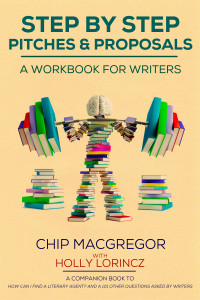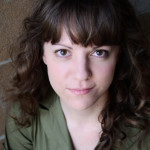- Agents
- Author News, Deals
- Awards
- Bad Poetry
- Blog News
- Books
- Career
- CBA
- Collaborating and Ghosting
- Conferences
- Current Affairs
- Deep Thoughts
- Favorite Books
- Featured
- Film
- Marketing and Platforms
- Proposals
- Publishing
- Questions from Beginners
- Quick Tips
- Religion
- Resources for Writing
- Self-Publishing
- Social Media Critique
- The Business of Writing
- The Writing Craft
- Thursdays with Amanda
- Trends
- Uncategorized
- Web/Tech
Category : Books
-
Continue Reading "Full Circle: The story behind the Wine Press Publishing debacle"
Full Circle: The story behind the Wine Press Publishing debacle
Longtime readers of this blog will recall that I wrote about the morons at WinePress Publishing when they threatened me with a lawsuit (you can read that story here), when it turned out they were a cult posing as a business and their Prez went to prison for raping a child (that one is here), and when it all caught up to them and they closed up shop (and that one is here). The church behind the whole charade tossed out accusations at all sorts of people (they once accused me of having contributed to the leader’s wife getting a brain tumor) and tried to damage some reputations. There were lots of authors hurt, books put into limbo, and relationships destroyed.
The one person they went after most was the woman who had first started WinePress Publishing, Athena Dean. She got involved in the church, they convinced her to cut out her family relationships, and she even turned over the publishing company to the people running their little religious operation. Eventually she realized what was going on — she was involved in a cult. When she evaluated her life, she realized the things going on at her church were the very definition of a religious cult: cut off from her family; involved in an insular little group of religious types with a charismatic leader who was largely unaccountable to any outside authorities; the leader dictated how members should act; the church offered a unique interpretation of scripture; dissent was strongly discouraged; there was preoccupation with making money; they maintained an us-vs-them mentality; members were encouraged to give an inordinate amount of time and money to the group; outside relationships were discouraged; and the ends justified the means (so they could, for example, create entire websites aimed at attacking individuals).
The attacks on Athena were personal and sharp. They detailed her divorce, situations she’d revealed to people in
-
Continue Reading "What’s the BEST BOOK you read in 2016?"
What’s the BEST BOOK you read in 2016?
As we wrap up the past year and move into the new one, I’m going to be back on the blog — taking a look at some of the top publishing stories, making some predictions for the future, and getting back to answering your questions about writing and publishing. But first, I’d like your input on one question:
What was the best book you read this year?
I do this at the end of every year, just so I can start to put together a reading list and see what others have found interesting. The title can be fiction or nonfiction. It could be a new book that released this year, or some great book from prior years that you’ve just discovered, but I’d like to know what your best read was in 2016.
Here’s my list of the top ten books I read this year, in no particular order:
The Return, by Hisham Matar. The true story of a boy from Libya, whose father, an outspoken critic of Qaddafi, simply “disappeared” one day. Twenty years later, the boy (now a writer) goes back to try and find traces of what happened. Beautiful writing and an insightful look at politics and violence. This is the sort of book that makes you see the world with new eyes.
One Summer: America 1927, by Bill Bryson. I love history, and this year read a long list of great history titles — Daniel James Brown’s The Boys in the Boat, David McCullough’s The Wright Brothers and The Johnstown Flood, Shirer’s The Rise and Fall of the Third Reich, and several others. But Bryson’s book, which seems to have been overlooked amidst all of his cute travel tales, offered a wonderfully engaging exploration of another time in American history. Babe Ruth, Cool Cal, the strange pilot Charles Lindbergh, the self-important Hoover, and the rest of the cast of 1927 make this a
-
Continue Reading "Ask the Agent: Were you really hit by a tornado?"
Ask the Agent: Were you really hit by a tornado?
So… it’s been a bit of a weird weekend. On Friday, the little town I live in on the Pacific Coast was hit by a tornado. It came in off the ocean, tore right through our small downtown, damaged trees and homes, and demolished several buildings. My old office, where MacGregor Literary resided up until a few months ago, was hit. Holly Lorincz, who now runs her editorial company from that office, was in the building, had her windows blown in, 130 mph winds roar through her space, and is alive though very shaken. (She was with her ten year old son, and the two of them were nearly blown away.) My good buddy, the crime writer Steve Jackson, was on the second floor of a building that was badly damaged, and survived by diving under his bed. They’re lucky they didn’t wake up in Oz. And the really odd thing is that we simply don’t GET tornadoes here. It’s not usually warm enough, so there haven’t been a dozen tornadoes in Oregon in my lifetime that have done any real damage. Then this happens. So, as you can see, there’s been a lot activity here, and it’s partly why I’m a bit late with this blog. Since we’re doing “Ask the Agent” all this month, I’ll invite you to send in your questions in the “comments” section below…
I have a hard time keeping my mouth shut on places like Facebook and Twitter. Can you be too opinionated online and ruin your chances of getting a contract?
Sure you can. I’ve had to remind young people that posting weird stuff on Facebook is going to be seen by future employers, and I’d say to authors that posting over-the-top stuff online can bother people. (I speak from experience. I’m generally a conservative, but I think Donald Trump is a pending disaster, and my talking about it online has damaged some
-
Continue Reading "Ten Bookstores in Five Days (a guest blog)"
Ten Bookstores in Five Days (a guest blog)
I used to think that the answers to everything could be found in books.
Now the internet has all the answers…or does it? I rarely find depth in Google offerings. So when I want to research something, I still turn to books.
San Francisco is a city full of independent bookstores, both for new and used treasures. I usually have my eight or so favorite bookstores that I go to time and time again. But this time it was different. I deliberately went to unexplored bookstores in neighborhoods new to me.
It was a joyful time. I loved the unexpected finds.
After all, at Dog-Eared Books, I couldn’t have known that I wanted a history of women’s strength training with the title of “Venus with Biceps.”
Or that at the art museum bookstore I needed a book called “Your Inner Critic is a Big Jerk.”
I delighted at finding book-related wisdom. In the Self-Help section of Green Apple books by the Golden Gate Park was a hand-lettered sign: “Aren’t all books self-help?”
The Green Apple book cart at their main store on Clement Street had other wisdom: “Think before you speak. READ before you think.”
I wanted the wallpaper in the backroom of Adobe Books that had the pattern of shelves of books.
The wonderful thing is, even when I do the tour next time, there’ll be new treasures as well as old ones.
How joyous!
-
Continue Reading "What was the most significant book you ever represented?"
What was the most significant book you ever represented?
All this talk about September 11 caused some people to ask about the books I mentioned in my previous blog post. Both books (Thunder Dog by Mike Hingson and Susy Flory, and Let’s Roll by Lisa Beamer) were big hits, and while I’ve had a long list of books that have hit the various bestseller lists, there’s no question that Let’s Roll was the biggest book I ever represented, and there’s a cool story behind it.
As I mentioned in my last blog post, I was in a plane, flying to New York when the planes hit the Twin Towers on 9/11. It was just a couple of nights later, as I was sitting on the couch and watching President George W. Bush address the nation about the terrorist attacks, that the Prez re-told the story of Todd Beamer’s bravery — how he had said “let’s roll!” to the passengers on Flight 93, and how they had tried to take the plane back from the terrorists, resulting in the crash in the Pennsylvania countryside, and the deaths of everyone on board. After telling the story, Bush motioned to the gallery, where Laura Bush was, and he mentioned that seated next to the First Lady was Todd Beamer’s widow, Lisa. That was the first time most Americans had ever seen her, and I was touched at her poise and grace.
“Good lord,” I said to my family as I sat on the couch, watching, “What a brave woman.” I remember being impressed with her ability to represent the families left behind, so soon after having lost her husband. “She could do a great book.” The truth is, my kids prayed with me about the idea of helping her do a book. Really. And, in my view, that’s how the project was born.
Two weeks later, after commercial flights had begun again, I made my way to Chicago, for one of
-
Continue Reading "Ask the Agent: So what are you reading?"
Ask the Agent: So what are you reading?
I used to regularly include updates of the books I’m reading on this blog, until I had some people complain that my personal reading habits weren’t that helpful to their writing careers. So I stopped doing it, and I’ve found I have missed talking about the various titles I’ve read, and being able to discuss books with readers books we liked or disliked. So when I received an email over the weekend that asked, “So what have you been reading lately?” I thought it was time to chat about some of the best and worst of the past few months. (Be warned: I’m a binge reader. I read a LOT in my job as a literary agent, and sometimes I’ll get on a roll and need to read several books on a topic. So maybe you won’t find all of this helpful, but at least you’ll know what an agent is reading — and I’ll encourage you to drop by the “comments” section at the bottom and tell me what YOU’VE been reading.)
-Over the past six months, I read a bunch of Malcolm Gladwell titles. I re-read Blink, Outliers, and The Tipping Point, then read David and Goliath. He’s one of those writers I always find interesting, and one of the few I feel I can go back and re-read without being bored. I learn a lot from Gladwell, and he causes me to think in new ways.
-In a flurry of reading on art forgery, I read several titles: Provenance, The Rescue Artist, The Art of the Con, Stealing Rembrandts, Caveat Emptor, Priceless, and Art of the Deal (the Horowitz version, not the Donald Trump version… though I suppose that book also touches on con men). I thought Priceless was great, Provenance was interesting, Caveat Emptor was awful, and the others fell somewhere in between. If you want to learn about a subject, reading a half-dozen books on
-
Continue Reading "About that million seller…"
About that million seller…
 So today I received a proposal that included these words: “This is a sure-fire million seller!”
So today I received a proposal that included these words: “This is a sure-fire million seller!”Uh-huh. Everybody thinks they’re going to sell a million copies. They hear about Fifty Shades of Gray and Hunger Games, and they think, “My book is just as good as those!”
Want a dose of reality? The 2015 sales reports are out. Take a look at how many books actually sold a million copies last year…
Of the hundreds of children’s and YA books that released last year, how many actually sold a million copies? One. That’s right — one. Old School, the tenth book in the Jeff Kenney Diary of a Wimpy Kid series was the only book last year that sold a million copies in print. John Green’s Paper Towns surpassed a million copies if you include print and ebook sales, but in print, there was ONE book. (And by the way, the bestselling print author in this genre last year is a guy who passed away 25 years ago — Dr Seuss sold a half-million copies of Oh the Places You’ll Go, and nearly that many copies of What Pet Should I Get, Green Eggs and Ham, and One Fish Two Fish Red Fish Blue Fish.)
And although there were thousands of nonfiction books released last year, guess how many sold more than a million copies in print? Um, one. The Life-Changing Magic of Tidying Up, by Marie Kondo, and aimed at all those slightly-OCD people like me, was the only title to surpass the million mark. To be fair, Chris Kyle’s American Sniper actually sold more than a million copies in print, but half were in a trade size book and half were in mass market, and those are treated as two different books by the crazy reporting system we have in publishing. It’s also a lock that Bill O’Reilly’s Killing Reagan had to have surpassed the million mark if
-
Continue Reading "Lessons from the Diving Board (a guest blog)"
Lessons from the Diving Board (a guest blog)
When I was a kid, my mom signed me up for a diving class. All the beginner classes were full, so she put me in an advanced class. I guess she thought I could learn to dive from the end of a board over the deep end just as well as I could from the side of the pool. I remember doing my fair share of painful dives, and hitting my head a few times. Within six weeks, though, I was doing inwards and back flips with relative ease.Writing a first book about Martin Luther, a man well covered by the most imminent of scholars, was a little like my first inward dive–naïve, driven, and far outside my realm of experience.I decided to write a book about Martin Luther while homeschooling. We use a literature-based curriculum, and I just didn’t see a lot of truly great options for older kids to learn about Luther. His story is exciting. I mean, there are knights, war, kidnapping, dramatic escapes, drama, and intrigue. What kid wouldn’t want to read about that? I wanted to write about it–to truly tell his story in a way that communicated all the excitement of Luther’s life and times, without glossing over his character and later life decisions.My first attempt at Luther was aimed at lower elementary kids, and I took it to my debut writer’s conference, knowing that if I could just communicate the need for narrative biographies for early readers, I could write a whole line of them. After all, such lines exist for important historical secular figures. I knew I was way out on the end of the diving board, but I figured I would at least try. I’m pretty sure I was shaking all four days.I learned a lot that first conference (where I met Chip, whom I really enjoy), and I went home to write a biography about Martin -
Continue Reading "How do I create a great book proposal?"
How do I create a great book proposal?
Your novel is ready to go. Your nonfiction book is fleshed out. NOW WHAT?
We’ve got a brand new book releasing to help all writers who are trying to create the best book proposal possible. Step by Step Pitches and Proposals: A Workbook for Writers is the new book from longtime editor Holly Lorincz and me.
 This book uses clear, detailed explanations, work-sheets, and annotated examples to walk you step-by-step through: industry terminology, querying, pitching, creating a proposal, and formatting the whole thing. You’ll find helpful information regarding what to say, who and when to query, and how to find contacts. Suggestions on how to create a pitch are offered, along with sample pitches, as well as advice from a speaking professional on how to deal with a face-to-face pitch.
This book uses clear, detailed explanations, work-sheets, and annotated examples to walk you step-by-step through: industry terminology, querying, pitching, creating a proposal, and formatting the whole thing. You’ll find helpful information regarding what to say, who and when to query, and how to find contacts. Suggestions on how to create a pitch are offered, along with sample pitches, as well as advice from a speaking professional on how to deal with a face-to-face pitch.Inside, there are detailed instructions for building professional, industry-standard proposals, both fiction and nonfiction, using plenty of examples and multiple samples of successful, real proposals. In fact, that’s one of the things that sets this apart from other books on proposals — I went back to authors whose books I had sold, and asked their permission to use the proposals we created. So the text offers real-world examples of proposals from books that actually sold in the market, including a couple bestselling books. There are also worksheets available in each section which readers have found extremely useful, walking the writer through their own material. There is even a section on how to format a manuscript before attaching it to a proposal. Here’s what some people in the industry have said:
“Chip MacGregor was my first literary agent and helped me get my very first book deal. I don’t know if there’s a better possible way for me to answer the question ‘Does Chip MacGregor know what he’s talking about?’ than that!” – Jon Acuff, New York Times Bestselling author of Do Over: Rescue Monday, Reinvent Your Work and Never Get -
Continue Reading "How to Ruin a Book at the Last Minute: Part 3, Avoiding Anticlimax"
How to Ruin a Book at the Last Minute: Part 3, Avoiding Anticlimax
 Continuing my series on writing great endings, I’m talking today about how to provide satisfactory resolution without letting the energy of your story run out.
Continuing my series on writing great endings, I’m talking today about how to provide satisfactory resolution without letting the energy of your story run out.I spent last week talking about all the resolution the reader expects from the denouement– resolve the events of the climax, answer unanswered questions, wrap up subplots, and establish main characters’ immediate futures. Sounds like a lot of content, right? But you as the author have a delicate balancing act to maintain, because while it’s true that the reader is going to be dissatisfied if you leave out the resolution they expect, it’s also true that there’s no better way to make sure your reader’s enthusiasm has flagged by the time they read the words “The End” than by dragging the book out two chapters after the story has actually ended. Ending on an anticlimax leaves a dull taste in the reader’s mouth and causes their last impression of your book to be a less positive one than if you send them out on an emotional high note, and the way to do this is to fit all your resolution in before the excitement of the climax has fully worn off.
The reader’s emotional high point usually coincides with the characters’, which is usually the climax– in a romance, the climax is not the wedding, but the dramatic moment when Slim rescues Peggy Sue from the train tracks and confesses that he always loved her, he just didn’t think a lawman had any right to ask a nice well-bred young lady to marry him and share his dangerous life. This is the moment when tension and emotions are the highest, and this is the moment that readers have been waiting for. Sure, they want to read that the happy couple got off the train tracks in time and know that Salty Sam is going to jail for his crimes, but the story is effectively over


